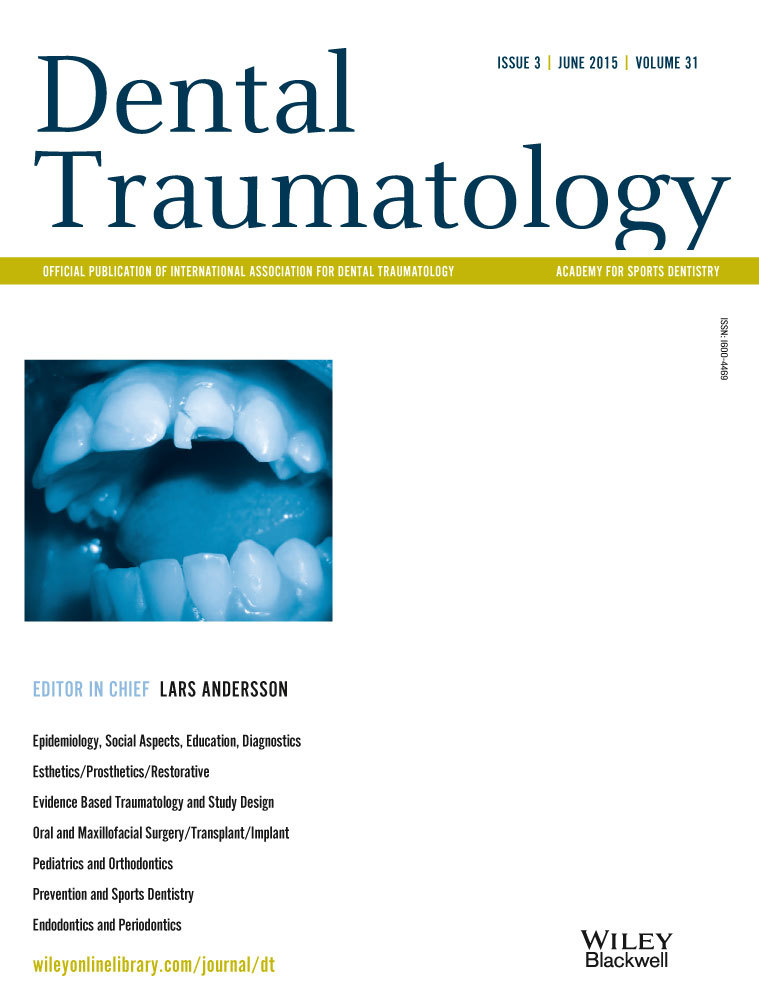Histological observations of pulpal replacement tissue in immature dog teeth after revascularization of infected pulps
Abstract
Background and aim: Many studies have examined the nature of tissue formed in the canals of immature necrotic teeth, following revascularization in animals and humans. While speculations have been made that regeneration of the pulp tissue might take place in the canal, the tissue has been found to be cementum-like, bone-like, and periodontal ligament-like. The purpose of this study was to histologically examine the tissue in the root canals in immature dog teeth that had been artificially infected and then revascularized.
Methods
Two 4- to 5-month-old mongrel dogs with immature teeth were used in the study. In one dog, four maxillary and four mandibular anterior teeth, and in another dog, four maxillary and five mandibular anterior teeth were used in the experiment. Pulp infection was artificially induced in the immature teeth. Revascularization was performed on all teeth by disinfecting the root canals with sodium hypochlorite irrigation and triple antibiotic intracanal dressing, completed with induction of intracanal bleeding, and sealed with an MTA plug. The access cavity was restored with silver amalgam. The animals were sacrificed 3 months after revascularization procedures. The revascularized teeth and surrounding periodontal tissues were removed and prepared for histological examination.
Results
Besides cementum-like, bone-like, and periodontal ligament-like tissues formed in the canals, residual remaining pulp tissue was observed in two revascularized teeth. In four teeth, ingrowth of alveolar bone into the canals was seen; presence of bone in the root canals has the potential for ankylosis.
Conclusions
Within the limitation of this study, it can be concluded that residual pulp tissue can remain in the canals after revascularization procedures of immature teeth with artificially induced pulp infection. This can lead to the misinterpretation that true pulpal regeneration has occurred. Ingrowth of apical bone into the root canals undergoing revascularization can interfere with normal tooth eruption if ankylosis occurs.




